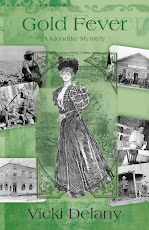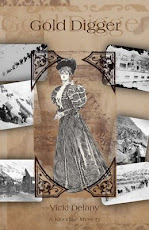 |
| The View from my desk |
When I first sat down to write the backstory in my novel More
than Sorrow, about the Loyalist settlers, I had no idea what I was
getting into. I guess I had in mind some
18th century version of neat prosperous farms and soft rolling hills
and cheerful welcoming townsfolk eager to help the newcomers out.
 |
| Fleeing their homes |
I hadn’t been aware that there was almost nothing in the way
of settlement in what we call Ontario
today. The French had settled along
the shores of the St. Lawrence, built cities – Montreal and Quebec City – towns,
and prosperous farms. As we all know the English took Quebec in 1759, but it remained
a French-speaking, Catholic area, governed by French civil law. When the Loyalists began arriving from the
United States they were not welcome in Quebec, and they didn’t want to live there,
under foreign laws and customs, in any event. Many Loyalists went to Nova Scotia or New Brunswick,
where there were some small settlements already established. As for Ontario there was a rough settlement
near Niagara, and that was it.
About a thousand decided to head off into the great Canadian
wilderness to carve out new lives and new futures. The group I followed in my novel was led by
Captain Peter Van Alstine, formerly of Kinderhook, New York. They left New York City, the last outpost of
the British in the United States, in late summer of 1783. All who wanted to leave were given transport
by the British on ships. Van Alstine’s group spent a thoroughly miserable winter
in Lachine, near Montreal. Remember that most of these people left their homes
with little more than the clothes they wore and few were even farmers, much
less woodsmen or soldiers.
My Loyalist character, Maggie Macgregor, was the only
daughter of one of the wealthiest families in the Mohawk Valley. She married into
an equally well-off family. Her’s was a
life of servants, fine clothes, good and adequate food, watercolour lessons and
piano practice. She and Hamish honeymooned in Charleston: a joyous month of dances and parties and teas.
A
few years later she was living in a tent during a Quebec winter, then setting
out on a bateaux down the St. Lawrence River and into Lake Ontario. The county they came to was nothing but dark,
foreboding forest and storm-tossed open lake, and rock-filled ground. The settlers were given land on
which to settle. The land ran in long
strips back from the lake or river because there were no roads. No roads, no towns, no shops, no doctors. And not much in the way of farming implements,
livestock, or even knowledge.
Nor did they have local experts around to offer advice. A few Natives visited the area on hunting and fishing trips, but by the 18th century there were no longer any Indians living permanenty in what is now the County.
It’s
a wonder any of the settlers survived.
But they did.
And I’m living here today on the land they cleared and on
which they prospered.
PERSONAL APPEARANCE:
I will be at Vicki’s Veggies (http://vickisveggies.com/Home.html) in the County on September 1st
and 2nd as part of their popular Heirloom Tomato tasting
weekend. I’ll be signing MORE THAN SORROW,
so please stop by and say hi.














No comments:
Post a Comment